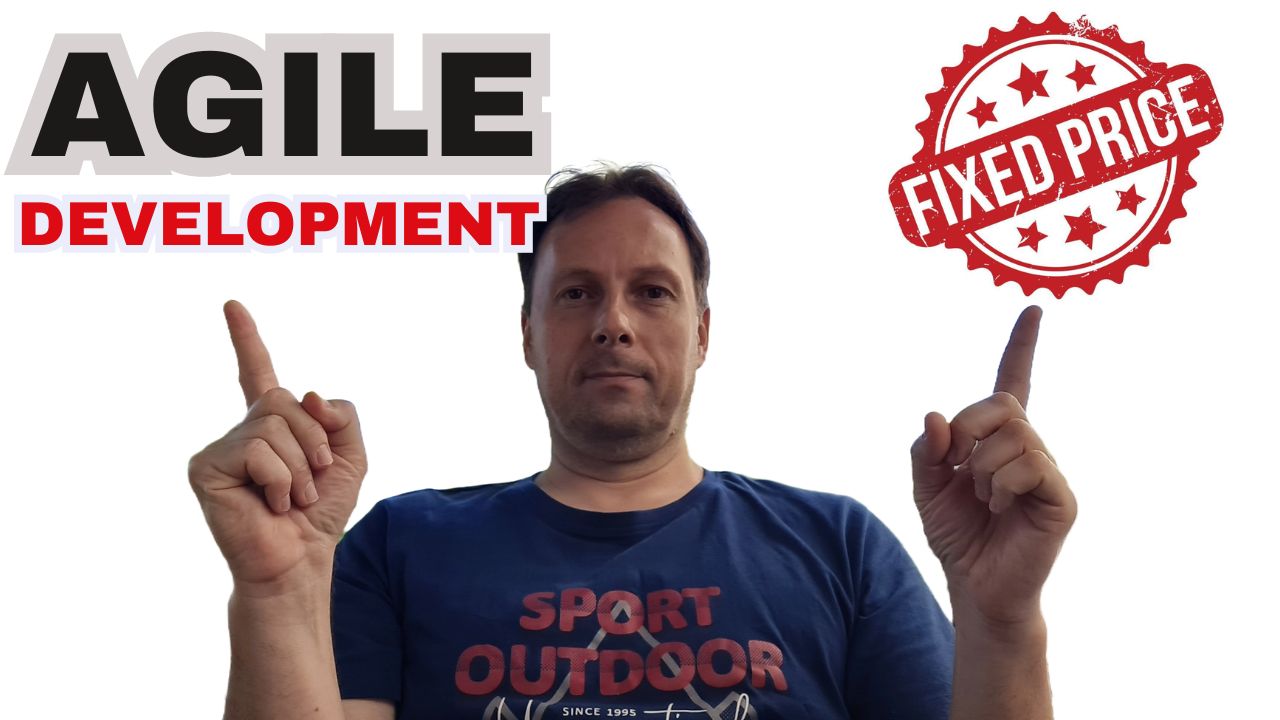Agile and Fixed Prices – Bridging the Gap – Is it possible?
Can Agile truly compete in a world of public bids and fixed-price contracts? Agile and Fixed Prices, is it possible?
How can we ensure transparency and value for taxpayers while still embracing the benefits of Agile development?
In this video, I’ll share with you the unique challenges and opportunities of using Agile in the public sector. I will show you strategies for cost estimation, navigating public competition, and ultimately, delivering successful projects that benefit everyone.
Let’s get started.
The traditional business case approach, with its detailed upfront cost estimates for the entire project, can be challenging to apply in an Agile context.
Agile focuses on delivering value incrementally through short, iterative sprints rather than a single large delivery at the end.
This creates unique considerations when it comes to estimating costs and getting business approval.
In the public sector, there are additional considerations around public competition and selecting the best value provider. There are a couple of ways to do this, but I would like to share my favorite:
The Stage-Gate Process
It involves breaking down the project into smaller, well-defined functionalities.
Your Agile team estimates these smaller parts in story points, for example, approximately 200 story points per functionality. So if the business wants to develop a new e-commerce website with functionalities like user registration, product catalog, shopping cart, and order management, it would total roughly 1000 story points.
For a more complex system, you can split those functionalities into subsets to estimate the development time and cost for each part. Build in buffer percentages (5-10%) to account for potential uncertainties during Agile development.
How do you calculate the total project cost?
It’s a straightforward process. Sum the estimated costs for each functionality to arrive at a total fixed price for the entire project.
Let’s revisit the example of the new e-commerce website project. The Agile team estimates the functionalities to be approximately 200 story points each, totaling 1000 story points.
A term to introduce here is the team’s historical velocity or the average number of story points completed per sprint. This helps forecast how much work can be delivered in a given timeframe, providing a data-driven way to estimate the time and costs.
First, let’s cover time
Number of Sprints:
Divide the total story points by the team’s velocity:
- Number of Sprints = Total Story Points/Velocity per Sprint
- Number of Sprints = 1000 Story Points/ 40 Story Points per Sprint
- Number of Sprints = 25 sprints
Number of Weeks:
Multiply the number of sprints by the duration of a single sprint:
- Number of Weeks = Number of Sprints × Duration per Sprint
- Number of Weeks = 25 sprints × 2 weeks/sprint
- Number of Weeks = 50 weeks
Based on the historical velocity, it would take approximately 25 sprints (or 50 weeks) to deliver a project of 1000 story points.
Now, let’s calculate the total cost
Known Factors:
- Number of Sprints: 25
- Team Cost per Sprint: $10,000
Unknown Factors:
- Other Expenditures: Expenses like software licenses, hardware, travel, training, and project management tools. This amount can vary.
- Profit Margin: The percentage of revenue the business aims to keep after covering all costs. This is a strategic decision based on market competition and business goals.
Estimated Team Cost:
Multiply the number of sprints by the team cost per sprint:
Total Team Cost
Total Team Cost = Number of Sprints × Team Cost per Sprint
Total Team Cost = 25 sprints × $10,000/sprint
Total Team Cost=$250,000
Total Project Cost (Estimation)
Without knowing the other expenditures and desired profit margin, we can’t provide a definitive total cost. However, we can create a formula to estimate the total cost based on these variables:
- Total Project Cost = Total Team Cost + Other Expenditures + (Profit Margin × Total Project Cost)
- Therefore, with a $50,000 estimate for other expenditures and a 20% desired profit margin, the total estimated project cost would be around $375,000.
Conclusion – Agile and Fixed Prices
To conclude, if the contractor wants this project to be done faster than 50 weeks and for less than $375,000, we wouldn’t apply for it.
As you can see, it is possible to use Agile even in estimating costs and getting business approval. Agile development introduces some unique challenges, especially in the public sector.
However, by using techniques like story points, velocity, and road mapping, Agile teams can provide the business with the information they need to make informed decisions.
